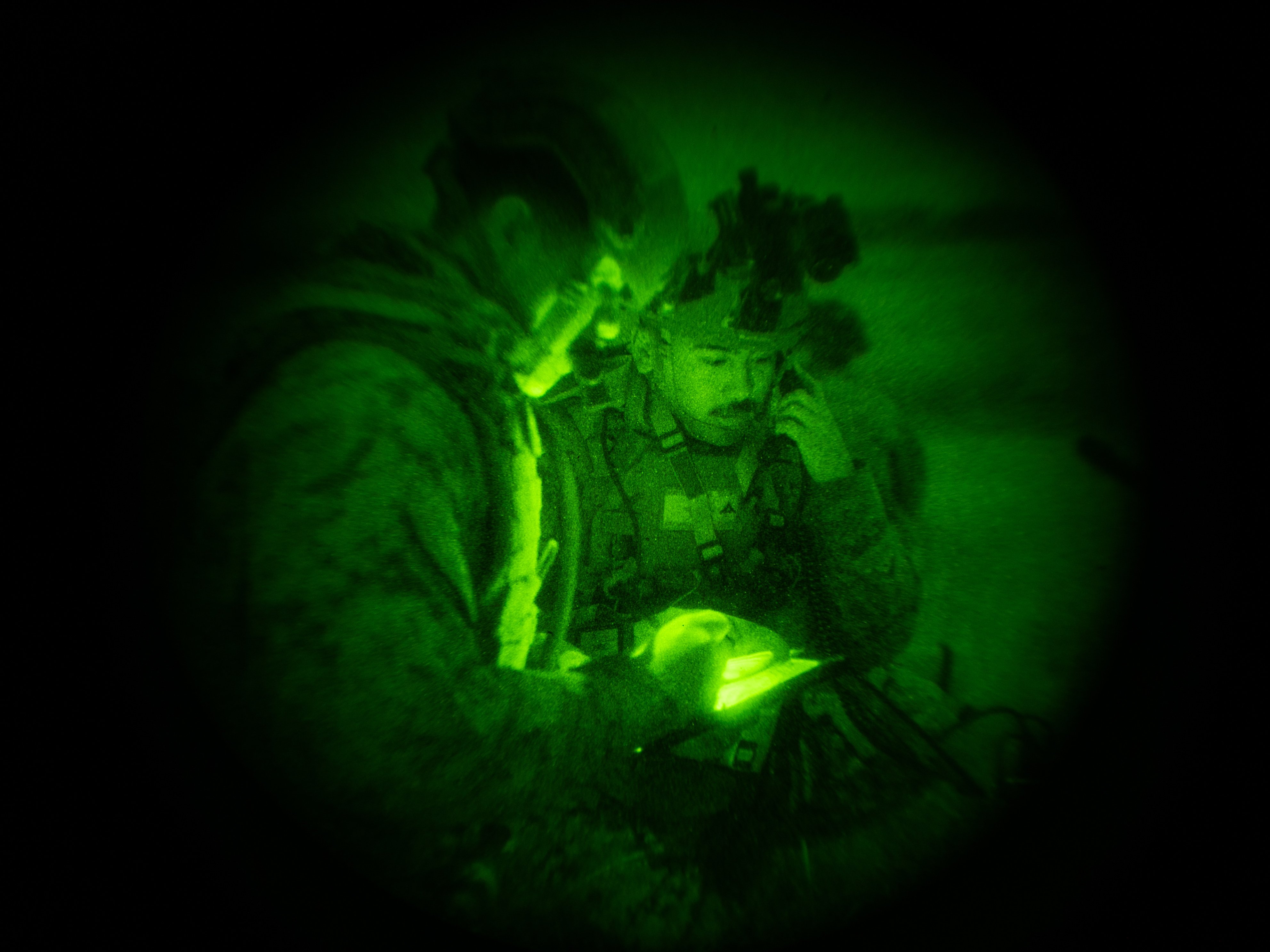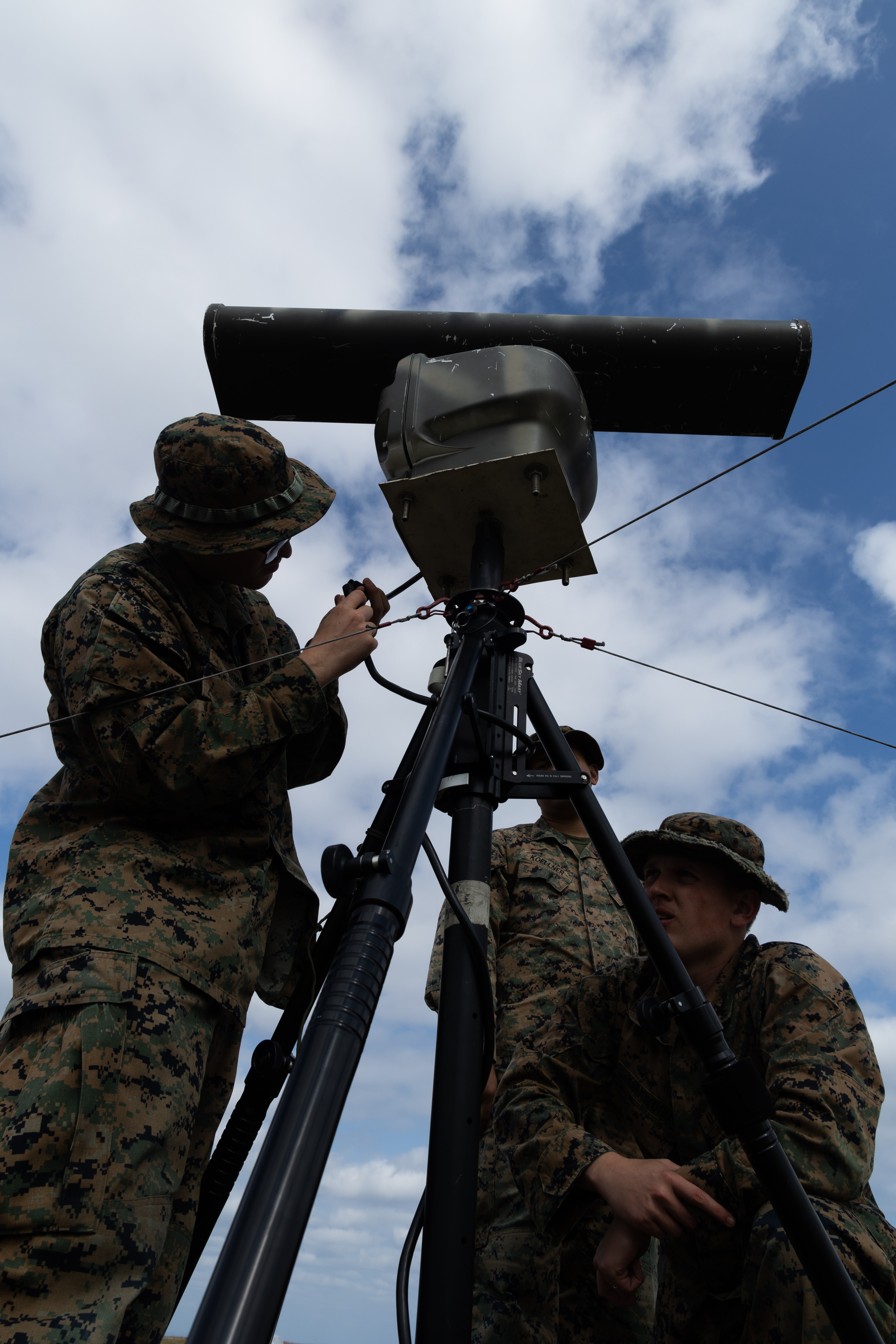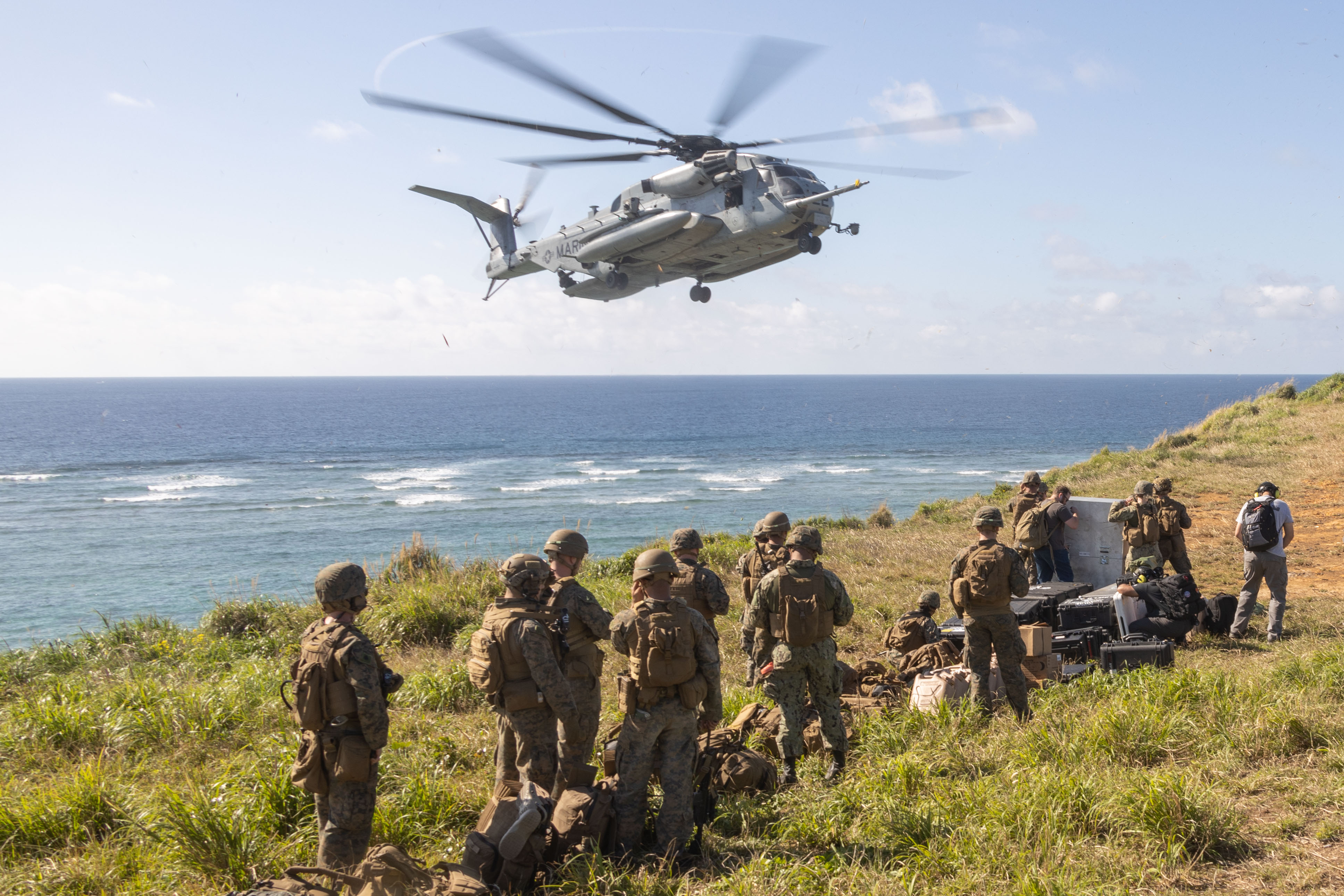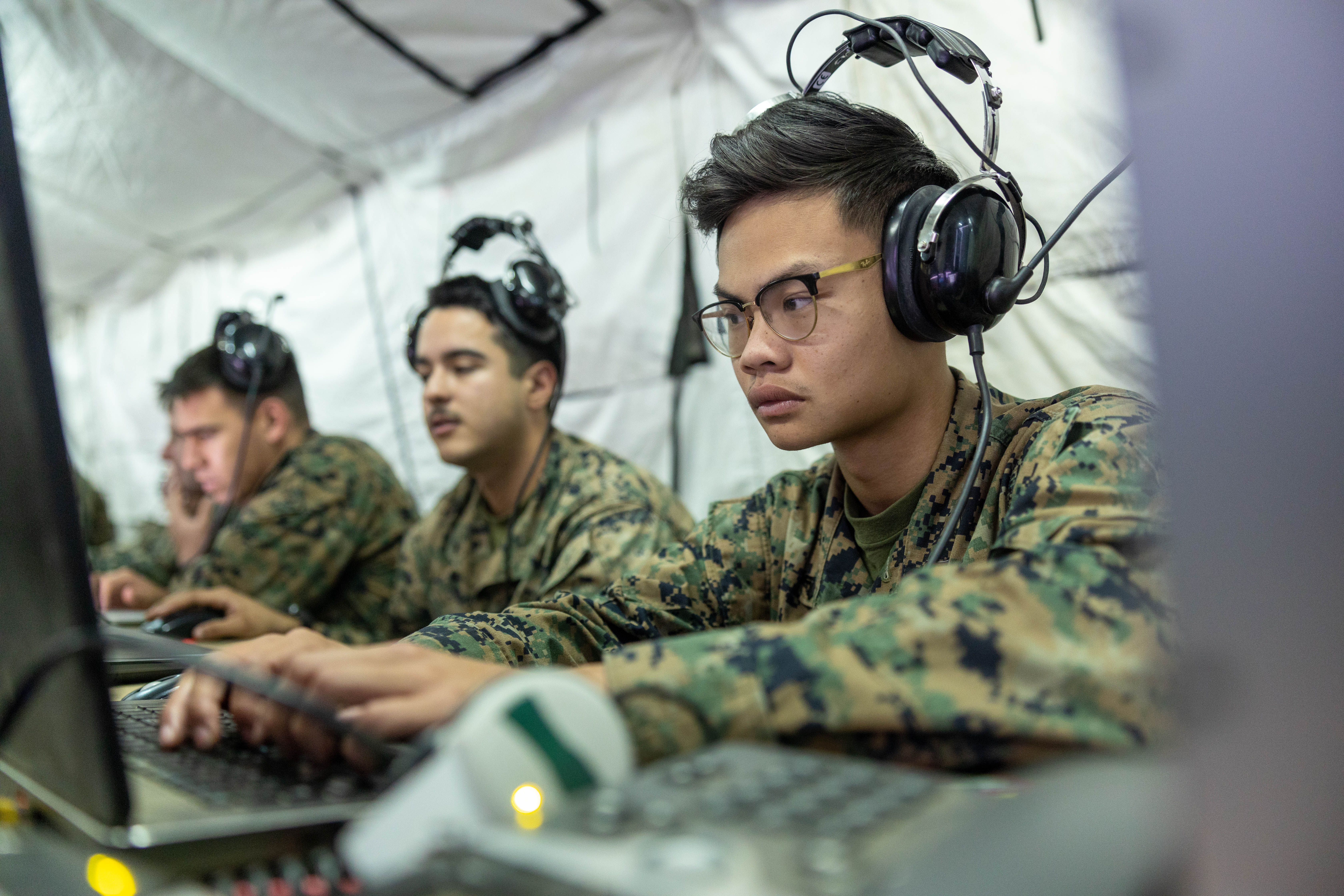
SAN DIEGO – The Marine Corps’ piece of the U.S. military’s ambitious joint command-and-control architecture modernization may soon get an official name: Project Dynamis.
Joint all-domain command and control (JADC2) is the Department of Defense’s concept to connect the five military services into a single network, with technologies such as artificial intelligence, automation and cloud environments.
Project Dynamis “has become the Marine Corps’ JADC2 effort for the whole service,” Col. Jason Quinter said during a briefing at the WEST 2024 conference, cohosted by the U.S. Naval Institute and AFCEA.
Quinter, who commands Marine Air Control Group 38 based at Miramar Marine Corps Air Station in San Diego, is leading an effort called Project Dynamis, and that’s being led by Lt. Gen. Matthew Glavy, the deputy commandant for information at Marine Corps Headquarters. The service is expected to roll out the project in the coming months.
If finalized and formally adopted, Project Dynamis would be the Marine Corps’ contribution to the broader JADC2 efforts that include the Navy’s Project Overmatch, the Army’s Project Convergence and the Air Force’s Advanced Battle Management System.
The project’s goal, Quinter told USNI News, is “to drive programmatics. It’s to replace old equipment with new equipment. It’s to replace old software with new software.”
Quinter told the WEST audience that Project Dynamis grew from a vision he crafted in an unpublished paper about evolving the communications community. Rapid advances in technology and real-world threats from peer and near-peer adversaries demand paradigm shifts in how the military services modernize their communication and networking capabilities and get after DOD’s overarching effort to connect sensors and shooters.
“We’re on the clock,” he said. “We don’t have time to do this across the (five-year defense plan) and wait seven years. We’ve got to do this now, if that means we have to do it at a small scale, initially to incubate this.”
Project Dynamis, Quinter said, “is the JADC2 accelerator.” It also would tie well into bolstering the service’s network modernization plans.
“We’re trying to modernize our networks for the future fight. Unfortunately, we’re suffering the same challenges that the other services are,” he said. Despite the advances in information technologies, “we just haven’t integrated it into our military formations,” unlike technologies available in smartphones that help ease daily life rather seamlessly.
Four focus areas

Quinter said Project Dynamis – Dynamis means unrealized potential or strength – will have four lines of effort.
The first is modernizing the Marine Corps’ command, control, communications and computers (C4) network and infrastructure, including increased and upgraded fiber capabilities at bases and stations.
The Marine Corps’ network exists in different echelons at the enterprise – from Marine Corps Cyber Operations Group in Quantico, Va., to regional network battalions and installations and stations, and, at the tactical level, to units and formations that deploy in support of combat operations, he said.
“We’re in the process of transitioning to cloud,” said Quinter, noting “the critical requirement for JADC2 is cloud. We cannot, we will not accomplish JADC2 in any way, shape or form – the vision, the strategy – without cloud.”
Moreover, he said, “what we need is a hybrid cloud architecture. We need our network to be hybrid-cloud enabled.”
“Think about data as the ammunition, the network is the weapons system,” he told the audience, which included defense industry vendors, contractors and Marines.
The second line of effort is developing data and transitioning to the cloud, already underway in the joint warfighting cloud contract, which was issued in late 2022 to four prime vendors: Microsoft, Amazon Web Services, Google and Oracle. The Marine Corps Cyber Operations Group, Quinter said, is working on the effort “so we can deploy edge devices on our network and leverage the cloud at the tactical edge.”
The third line-of-effort is federating authoritative data for artificial intelligence, machine learning and big data analytics, Quinter said. Across DOD, he noted, “we have a lot of work to do to structure our data so we can actually run algorithms on our data. I would consider our data to be very dirty. It’s not managed properly … We’re working through that right now. But there’s a lot of work to be done.”
“Once we get those authoritative data sources aggregated in one place, we federate all of our systems so they all can talk to one another, we’ll be at the tip of the iceberg in terms of what our potential power is within DOD with regard to machine learning. We’re not even scratching the surface yet. But what we’re really trying to do is weaponize that data,” he said. And that means operating “at machine speed.”
“We’re not necessarily talking about robot wars, but that’s the direction that we’re heading,” he added. “Let’s not mince words. What we’re talking right now is the desire for semiautonomous warfare. That’s what JADC2 is really all about. It’s about kill chains, and how do you automate the kill chain.”
Faster processors “can close the kill chain faster than you. War and warfare is fundamentally a contest between who makes the decision faster and acts faster,” he said.
The fourth line-of-effort is educating the force with C4/cyber literacy. “We don’t have enough people that understand C4/cyber, or even want to learn about it,” Quinter said. While technical, “it’s very important. We need to figure out how to infuse this education in the appropriate places in our schoolhouses at the appropriate level for the rank of the person we’re educating.”
The networked battlespace

Having a 5G network is key to modernizing the kill chain for peer competition. “At the tactical edge, I believe 5G is going to be a critical component of our networks going forward,” Quinter said.
The single-channel radio, first used during World War II, is outdated technology and no longer useful. “We need to replace it with smart devices – pick one, it doesn’t matter,” he said. “It just needs to be a smart device you can load the software that I need to use to kill the enemy with. It’s that simple. So 5G technology can revolutionize the command-and-control networks across the entire military.”
An iPhone or Samsung Galaxy smartphone, he added, “can be a cross-domain solution for both” classified and nonclassified networks while providing voice, video and data capabilities on one piece of hardware.”
So instead of a single-channel radio supporting a platoon of Marines on the battlefield, Quinter said, “every Marine can have one of those devices on the front of their kit. You want to talk about every sensor connected to every shooter. Every sensor is every single human being that wears a Marine Corps uniform. That’s entirely possible in 2024 … So 5G is going to be the biggest enabler.”
It also will transform how forces and commanders operate on the battlefield. With mobile networks and a tactical cloud, a combat operations center won’t be relegated to a tent and a set location. “I need to be able to move quickly. That’s why 5G is critical,” said Quinter. “How fast do I need to move? How far do I need to move? Well, outside the effective … radius of a cruise missile.”
With a 5G kit, “your office will be wherever you are, wherever you’re standing. You can do just about anything on an iPad or an iPhone you can do on a laptop computer,” he said.
“That is where you’re going to close the kill chain,” he added. “You’re going to close the kill chain on a network, so I think the faster we accept that, the further along we will get and the faster we will do that.”

Starting this month, Marine Air Control Group 38 is participating in Capstone IV of the Army’s Project Convergence and supporting Army testing in the Army Futures Command–led exercise at the Marine Corps Tactical Systems Support Activity at Camp Pendleton, Calif., Quinter said.
The exercise includes a surface action group with U.S. 3rd Fleet ballistic-missile defense ships and littoral combat ships and a Navy tactical air-control group, he said. “What we’re really trying to do is to integrate, really, the joint force. The role of JADC2 is to connect every sensor to every shooter. And that’s across the joint world, not just in terms of the Marine Corps.”
“The whole reason JADC2 is important is interoperability challenges,” he added. “We have equipment that doesn’t interface properly. We have software that doesn’t interface properly, and … we’re really trying to get after that” with the Department of Defense’s JADC2 strategy.





